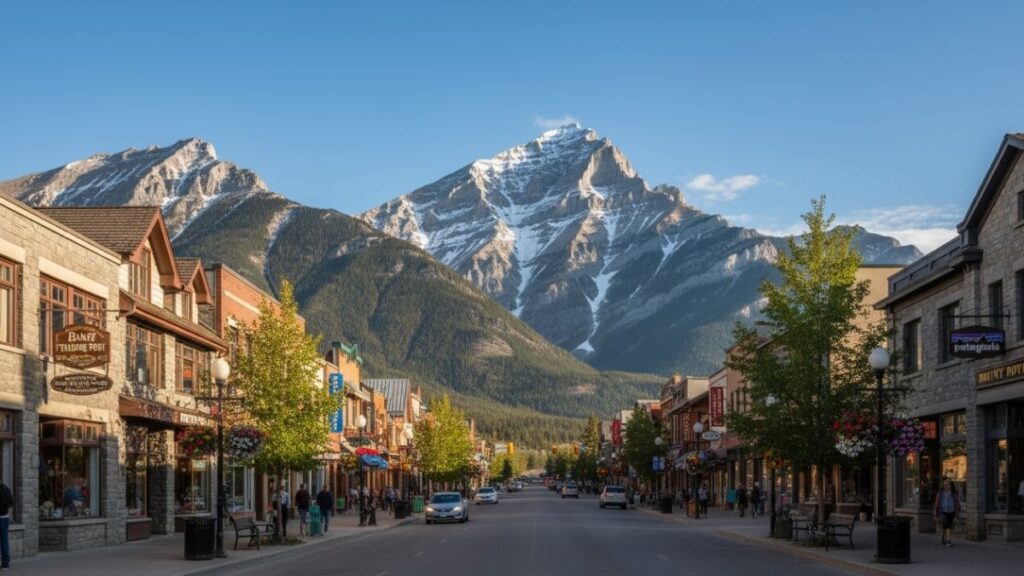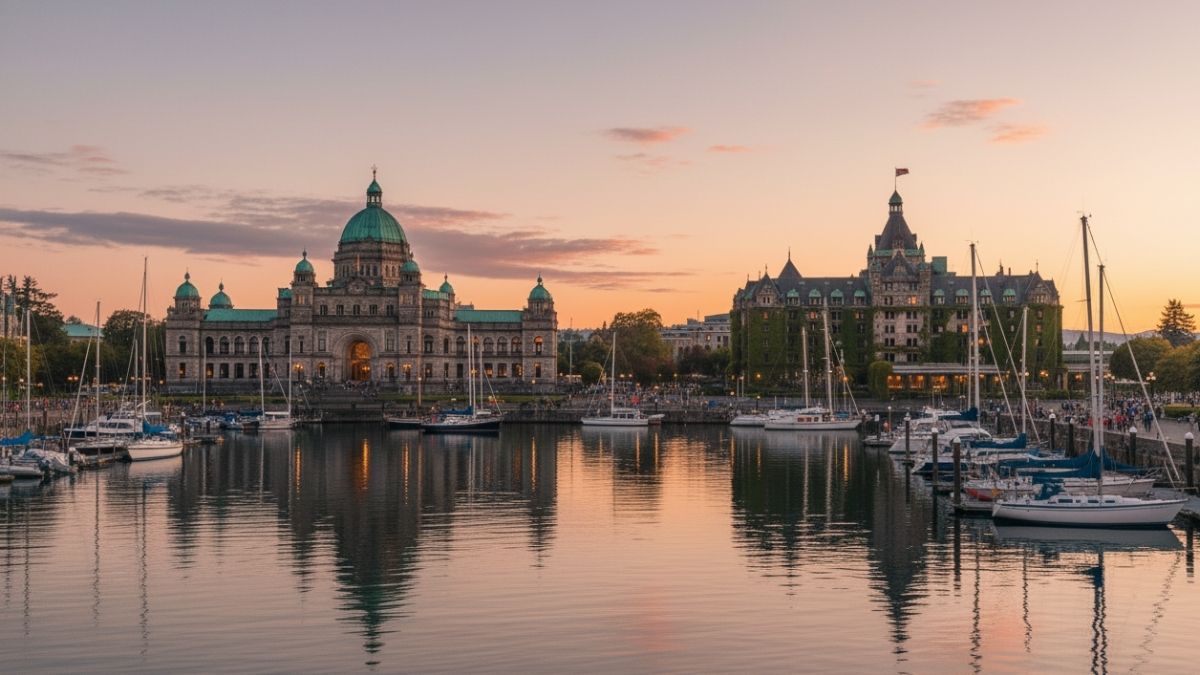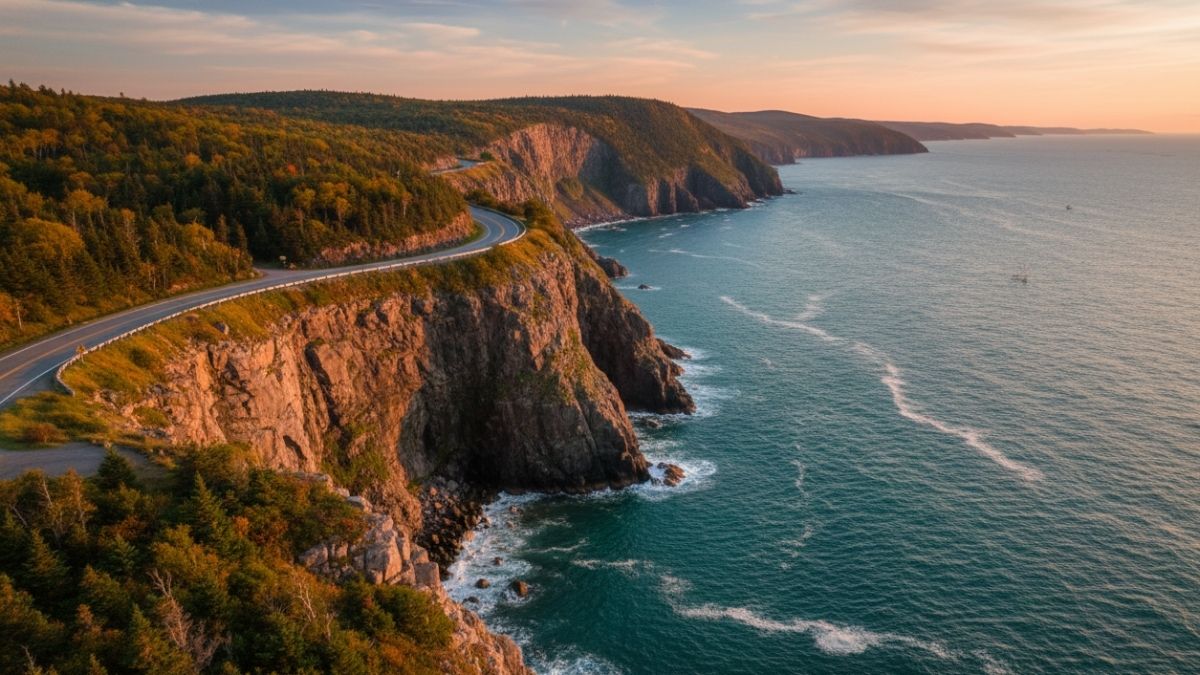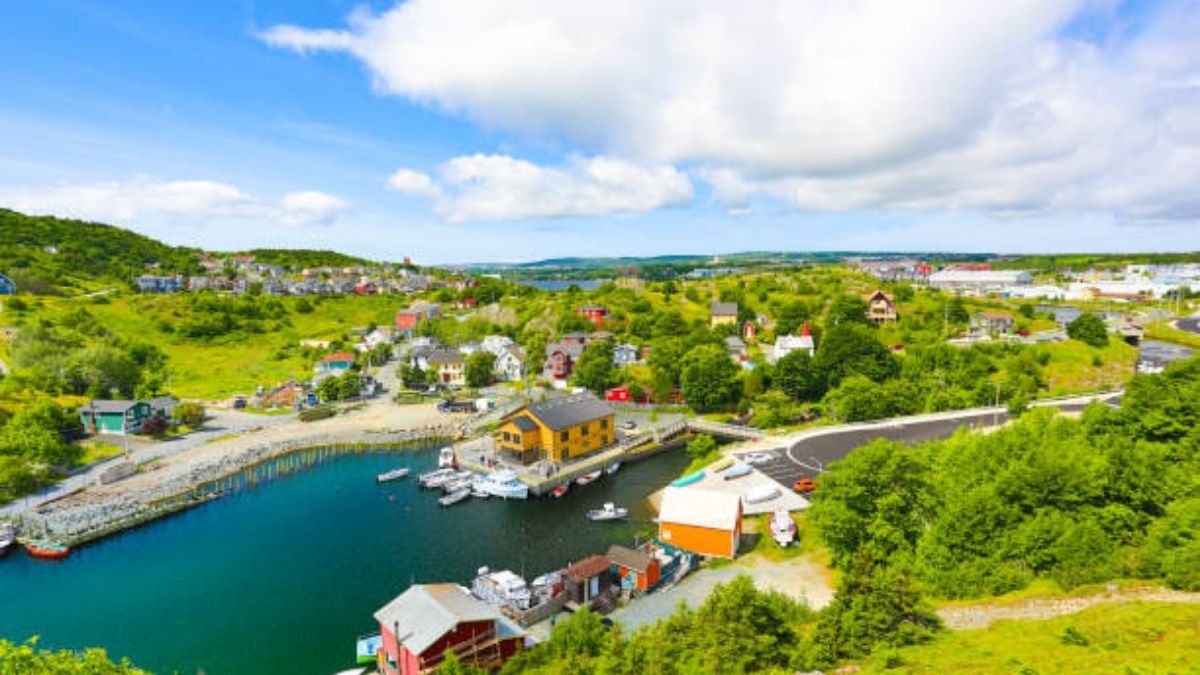Long before Banff became a postcard of perfection, it was a place of healing and wonder for the Indigenous peoples of the Canadian Rockies. The Stoney Nakoda, Ktunaxa, and Blackfoot Nations called these mountains home. They believed the steaming mineral pools bubbling from Sulphur Mountain were sacred—places where body and spirit could find renewal.
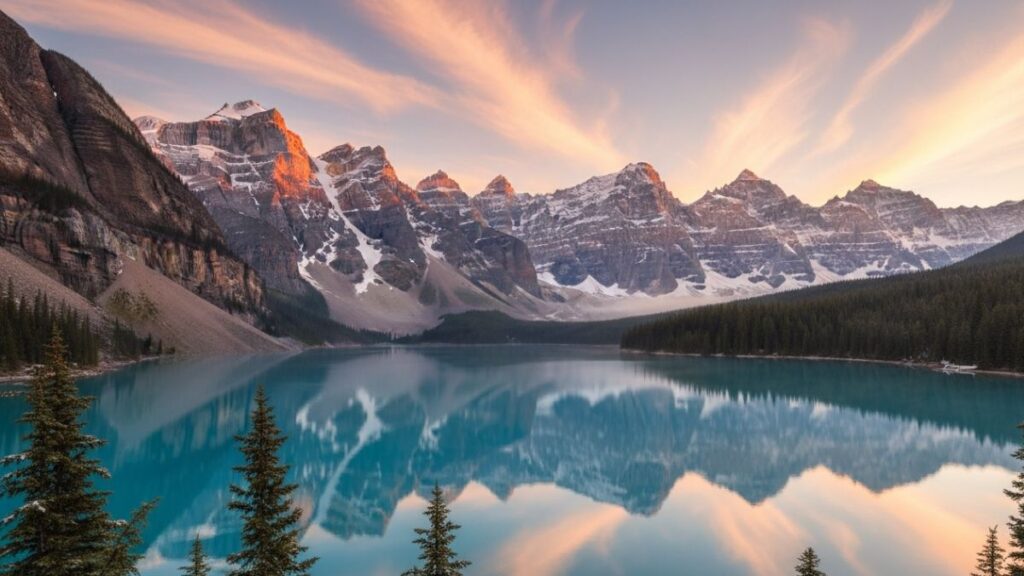
In 1883, as workers laid track for the Canadian Pacific Railway, three railway employees stumbled upon these same hot springs. Their discovery set off a chain of events that would shape Canadian tourism forever. Within two years, the government designated the surrounding area as Canada’s first national park—initially known as Banff Hot Springs Reserve. It covered just 26 square kilometers then, a fraction of the 6,600 we know today.
The arrival of the railway opened Banff to travelers from across the country and around the world. The iconic Fairmont Banff Springs Hotel, built in 1888, became the jewel of mountain luxury, welcoming everyone from explorers to royalty. Early visitors came seeking both the wild and the refined—crisp alpine air by day, fine dining by night.
Through the decades, Banff’s purpose evolved. Once a curiosity of bubbling pools, it grew into a symbol of preservation—a reminder that nature should be protected, not conquered. In 1984, UNESCO recognized Banff and the larger Canadian Rocky Mountain Parks as a World Heritage Site. Today, it stands as a living timeline: Indigenous heritage, pioneer grit, and modern conservation all coexisting in one breathtaking landscape. Visit the Banff Park Museum.
If you’d love the complete Banff National Park experience — with detailed itineraries, hiking trails, packing tips, local laws, and insider travel advice — grab your FREE Banff National Park Travel Guide eBook today.
If you prefer something you can flip through by the campfire, you can also order the paperback edition on Amazon or Lulu Bookstore.
Simply enter your name and email below to get instant access to your free download.
Planning your mountain adventures just got easier with WorldTourGuide. And while you’re at it, don’t miss our Traveler’s Toolkit — trusted by explorers in our travel community to plan smarter, pack lighter, and travel better. You’ll thank yourself later for making this choice.
Official Parks Canada guide to Banff National Park.
The Geography and Natural Beauty of Banff
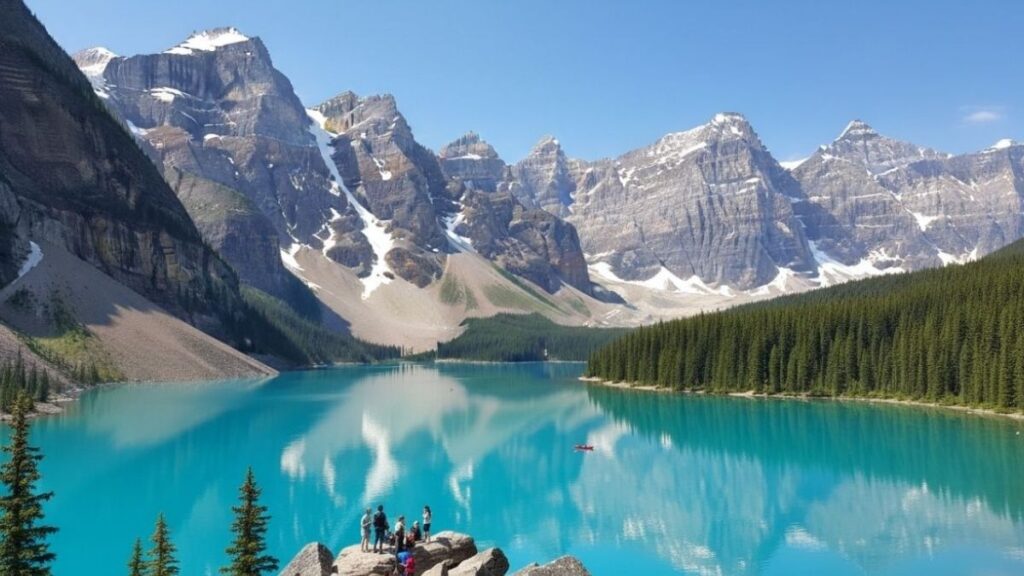
Imagine standing in the heart of the Canadian Rockies, mountains rising like stone giants on every side. Glacial lakes shimmer in turquoise hues so bright they almost don’t look real. This is Banff National Park—where every direction feels like a new discovery.
Banff lies along the eastern slope of the Continental Divide in Alberta. Its landscape was shaped over millions of years by shifting tectonic plates and slow-moving glaciers carving their way through rock. The result is deep valleys, jagged peaks, and alpine meadows that explode with color every summer.
Peaks like Mount Rundle, Cascade Mountain, and Mount Temple frame the horizon. You’ll find lakes so vivid they look painted—Lake Louise with its icy turquoise glow, Moraine Lake with its deeper sapphire tones, and Lake Minnewanka stretching for miles like a mirror of the mountains. Even smaller lakes, like Peyto and Vermilion, feel like secrets worth keeping.
Johnston Canyon’s rushing waterfalls, the calm Bow River winding through town, and the elevated views from Sulphur Mountain—all tell Banff’s story of water, stone, and time. Wildlife thrives here too: elk grazing in the meadows, mountain goats clinging to cliffs, bears wandering through forests. Banff is one of the few places where nature feels both immense and intimate, where you can step onto a trail and immediately feel part of something bigger.
When to Visit: Best Seasons and Events
There’s no wrong time to visit Banff—only different kinds of magic.
Spring (April–June): The park wakes up slowly. Melting snow feeds the rivers, waterfalls roar, and wildlife begins to stir. Crowds are thin, prices are lower, and peace is easy to find. It’s the perfect season for travelers who love quiet mornings and cool mountain air.
Summer (July–August): This is Banff’s peak season—and it earns that title. Every lake sparkles, every trail is open, and the town hums with life. The days are long and warm, and adventure waits around every corner. The trade-off is more visitors and higher prices. Still, if you dream of canoeing across turquoise waters or hiking through wildflowers, this is your time.
Fall (September–mid-October): The crowds fade, and the colors explode. Larch trees turn gold against the grey peaks, making trails like Larch Valley and Sentinel Pass unforgettable. The air turns crisp, and the park feels both calm and alive.
Winter (November–March): Banff transforms into a snow globe. Skiers flock to Banff Sunshine, Lake Louise Ski Resort, and Mt. Norquay. Others come to skate on frozen lakes or soak in hot springs beneath falling snow. Festivals like SnowDays fill the streets with ice sculptures and laughter. If you crave peace and powder, winter delivers.
How to Get There: Flights, Shuttles & Scenic Roads
Getting to Banff is easy—and beautiful. Most travelers fly into Calgary International Airport (YYC), about two hours east of the park. From there, you can rent a car or hop on a shuttle like Brewster Express or Banff Airporter. The drive west along the Trans-Canada Highway feels like a journey through another world. Mountains grow taller with every mile.
If you prefer freedom and flexibility, rent a car. It gives you the chance to stop at viewpoints, picnic by Bow Lake, or detour to nearby Kananaskis Country. In winter, make sure your vehicle has snow tires.
For a slower pace, guided transfers and tour buses offer commentary and comfort. If you’re already in western Canada, scenic routes connect Banff from Edmonton, Vancouver, and Jasper—the Icefields Parkway between Jasper and Banff is particularly stunning. However you arrive, the journey sets the tone: wild, open, unforgettable.
N.B.: If you organize your trip early and pack smart using our recommended travel gear essentials and trusted travel partners below, you’ll skip the “I wish I knew” stress. From booking flights to finding the best travel deals, these are the gears that make every journey smoother — and save you money while you’re at it.
Best Areas to Stay: Pros and Cons
Downtown Banff is lively, walkable, and full of restaurants, cafés, and shops. It’s perfect for first-timers who want everything within reach. Tunnel Mountain offers quieter stays surrounded by forest but still close to town. Lake Louise feels like another world—romantic, remote, and absolutely breathtaking.
Canmore, just outside the park, is more affordable and relaxed, with a strong local vibe. And for adventurers, campgrounds across the park offer nights under the stars you’ll never forget.
Every area has its rhythm. Downtown hums. Lake Louise whispers. Choose the one that matches your pace.
Lake Louise, Moraine Lake & Johnston Canyon
Banff’s crown jewels sit in its valleys and canyons.
Lake Louise glows turquoise in summer and freezes into a skating rink in winter. Paddle across it or hike to the Lake Agnes Tea House for views worth every step.
Moraine Lake, deep in the Valley of the Ten Peaks, is pure wonder. The short Rockpile Trail leads to the classic view seen on postcards. Access is limited now—no private cars allowed—so plan ahead and book a shuttle.
Johnston Canyon offers suspended walkways, rushing waterfalls, and an easy-to-reach adventure for all ages. In winter, the ice formations sparkle like glass sculptures.
Each of these spots shows Banff at its best: alive, dramatic, and perfectly untamed.
Banff Gondola and Hot Springs
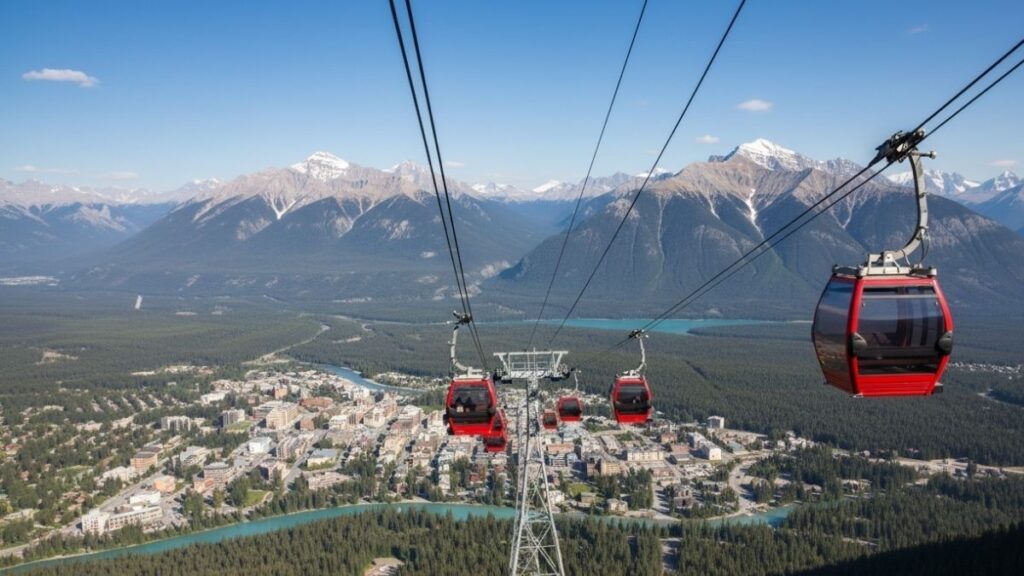
For every explorer who climbs mountains, there’s another who simply rides to the top—and Banff’s gondola makes it easy. The eight-minute ride up Sulphur Mountain lifts you to sweeping views of the Bow Valley. At the summit, wooden boardwalks lead to lookouts that make time stand still.
Then there’s the Banff Upper Hot Springs, where naturally heated mineral water flows from the earth. Slip into the pool, feel the warmth, and gaze at snow-capped peaks. These two experiences—one above, one below—capture Banff’s rhythm: adventure balanced by peace.
Icefields Parkway and Scenic Points
Few drives compare to the Icefields Parkway, the ribbon of road linking Banff to Jasper. It’s 230 kilometers of pure wonder: glaciers, waterfalls, and valleys that stretch forever.
Stop at Bow Lake for morning reflections, Peyto Lake for that famous wolf-shaped view, and the Columbia Icefield for a walk on ancient ice. Tangle Falls and Sunwapta Falls thunder beside the road, easy to reach yet breathtaking every time.
Bring snacks, fuel up before you go, and take your time. Out here, the journey is the destination.
Park Entry, Passes, and Visitor Rules
All visitors need a Parks Canada pass to enter Banff. Buy your park pass on the Banff & Lake Louise Tourism site.
Daily passes suit short stays.
- Discovery passes cover all national parks for a year.
- Display your pass on your car dashboard to avoid fines.
While inside the park, follow the basics:
- Never feed or approach wildlife.
- Stay on marked trails.
- Respect fire bans and quiet hours.
- Leash your pets.
- Leave no trace—pack out what you bring in.
- Drones are prohibited without special permits.
These aren’t restrictions—they’re respect. Banff’s wilderness stays wild because people care enough to protect it.
Tips for Staying Safe and Aware in Nature
The mountains are magnificent, but they demand mindfulness.
Check trail conditions before heading out. Tell someone where you’re going. Go with bear spray and make sure you know how to use it. Make noise while hiking through dense woods, especially near running water.
Pack for quick weather changes: a rain jacket, layers, sun protection, snacks, and water. Don’t rely on cell service—download maps or carry a paper copy. And if your body says “turn back,” listen. The mountains will wait for you.
Safety here isn’t fear—it’s freedom through preparation. When you’re ready, Banff rewards you with peace and perspective no city can match.
Tipping, Taxes, and Payment Practices
A little money matters to make your stay smoother. In Banff, tipping follows Canadian norms:
- Restaurants: 15–20% of your pre-tax bill
- Taxis: 10–15%
- Bellhops: $1–2 CAD per bag
- Housekeeping: $2–5 CAD per night
Alberta adds a 5% Goods and Services Tax (GST) to most purchases—no provincial sales tax, so your total stays friendlier than in other provinces. Credit cards are accepted almost everywhere, though cash tips are appreciated.
Round up, say thanks, and enjoy the ease. Hospitality runs deep in these mountains.
Before we wrap up this travel guide, here’s something exciting you won’t want to miss!
Our travel media agency, WorldTourGuide, has officially launched a Sponsored Trip Program — a one-of-a-kind opportunity where our most active fans, like you, can earn the chance to explore their dream destination.
If you’re ready to see where this adventure could take you, click here to learn how the program works and find out how you can join this purpose-driven travel experience.
Final Thoughts
Banff National Park is more than a destination—it’s a feeling. A place where rivers carve through memory, where peaks catch the first light of day, where silence has a sound all its own. It’s where you realize that travel isn’t always about escape—it’s about return. Return to wonder. Return to nature. Return to yourself. And in Banff, that return feels timeless.
And that brings our Banff National Park journey to a breathtaking close! I’m wishing you safe travels and unforgettable moments as you wander through alpine valleys, paddle across turquoise lakes, and watch the sun dip behind snow-dusted peaks.
📘 Remember your FREE Banff National Park Travel Guide eBook — if you missed it earlier, simply enter your name and email below to get instant access. You’ll also receive future updates, insider travel tips, and exclusive offers from WorldTourGuide to help you plan smarter, explore deeper, and travel better.
